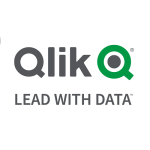With Power BI, I create dashboards. We have an IT manager responsible for supply chain and CRM, including billing. I handle the supply chain module, receiving end-user requests for dashboards and reports.
I create analysis and measures in Analysis Services, then craft dashboards that meet end-user requirements.
My work involves using SQL Server Integration Services to integrate data from various sources, including Oracle and SQL Server, and then store them in Data Warehouse.
Power BI significantly organized our KPIs, making them accessible for immediate business decisions, like analyzing profits or losses.
For example, in supply chain management, Power BI provides well-organized KPI data and calculated measures that aid decision-makers. Unlike before, they don't have to wait for detailed data; they get well-defined KPIs and calculated measures that offer insights into the business, allowing them to make informed decisions regarding future strategies and properties.
Power BI's collaboration functionality improves teamwork in our organization. We had a lot of entries and a lot of people who were working with Power BI. It's been four years, and some new members have less experience. We all collaborate to share information and experience, which improves collaboration.
Power BI's ability to integrate any data source, whether it's a cloud database, Analysis Services, or another type, is incredibly valuable. It allows us to make the right data available for analysis.
Additionally, the flexibility to enhance our dashboards with new charts found online further helps with our analytical capabilities.
I also like the feature of the Page Navigator in Power BI. The Page Navigator allows users to navigate through different pages on the dashboard simply by clicking on the desired page, and Power BI will automatically open that page.
Additionally, Power BI offers interactions where I can decide what Slicer or chart can filter another. Not all sources can filter all the others, and not all filters can be applied universally.
I've also found Bookmarks to be a valuable feature, allowing for control over what sources are affected or whether they are visible or invisible during any interaction in Power BI.
The dashboard and reporting features are very effective in decision-making. They enable decision-makers to determine the next steps, such as analyzing profits and losses, evaluating supplier performance, including late fees, and managing purchase timings in relation to delivery and order dates.
Data integration is very useful in Power BI. It lets me collect data from many sources, especially with IT support. I get data from tools, databases, data warehouses, and data lakes. For example, I can get data from Oracle databases and SQL Server databases at the same time.
We combine this data into a single destination—either a table or a database. This lets us analyze the combined data and create visualizations. Ultimately, we can consolidate information like customer details from different solutions into a single table. We can also change data types, clean the data, and organize it effectively.
When I create measures, sometimes the error messages aren't clear. It makes me spend more time searching for solutions. I need the error messages to be more specific.
So, I would like clearer error messages when creating measures.
I've been working with Power BI since January 2020, so it's been four years.
It is very stable. I would rate the stability a ten out of ten.
It works well for a large number of users. We have almost 15 to 20 end users.
I would rate my experience with the initial setup a four out of ten, with one being difficult and ten being easy to set up.
It's difficult to set up. Sometimes, I need technical support to resolve issues.
We use it on-premises.
The deployment time varies. Sometimes it takes two days, and sometimes it takes two weeks. If the dashboard has a lot of KPIs, it will take more time. Also, if the data already exists as measures, it's less complicated.
It's accessible with some subscriptions. We have a lot of users that we can send dashboards to daily, and that would cost a lot of money otherwise. But setting up Power BI itself is not expensive.
I would definitely recommend using this solution. It's easy to use. It can get data from a lot of sources. It's user-friendly. It's easy to learn, and it's easy to search on the internet for information about it.
Overall, I would rate the solution a nine out of ten.





















